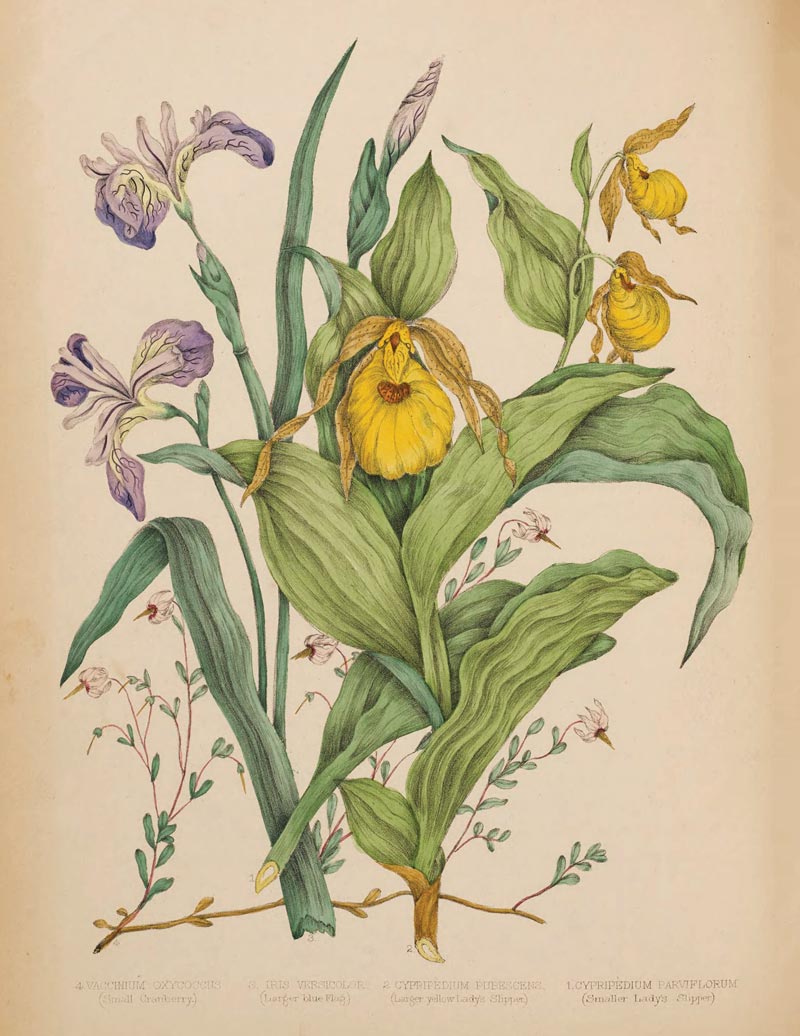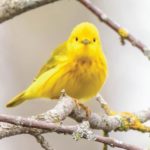
Catharine Parr Traill’s contribution to the record of natural Canadian history is immeasurable.
When Catharine Parr Traill arrived in Cobourg in 1832, she was told by one disgruntled settler that it would take five years of backbreaking work before she could think of planting a flower garden.
Indeed, the vast tracts of virgin forests and the savannah plains that Catharine and her husband faced were a far cry from the manicured gardens and patchwork fields defined by the neat hedgerows of the English countryside they left behind.
As she and her husband Thomas wended their way north, the track through the backwoods was banked by ancient white pines towering 100 feet above the ground with trunks five to six feet in diameter. Where the giant forests had been cleared, the massive trunks remained, smouldering or blackened by the fires set to remove them from the landscape.
Years of agonizing work lay ahead – years marked by crop failures, poverty and tragedy. Between 1833 and 1847 Catharine gave birth to nine children, two of whom died in infancy. Her beloved husband Thomas was no match for the Canadian wilderness. His fragile mental and physical health coupled with his own ineptitude resulted in a life of grinding poverty for his family.
But Catharine was a remarkably resilient woman who adapted to her circumstances. She wrote books; she penned articles for magazines and gazettes; she even tried her hand at teaching, all the while raising a family. Unlike her husband, she embraced the backwoods and delighted in the raw beauty that surrounded her. Her early writings describe her fascination with nature. Over her lifetime, she gathered, preserved and researched dozens of specimens, taking notes on their appearance and life cycles. She gleaned her knowledge of the medicinal and food value of plants from Indigenous women in an attempt to identify with and understand her surroundings.
Armed with only one resource book, Frederick Pursh’s Flora Americae Septentrionalis (North American Flora), she painstakingly recorded her observations and carefully pressed specimens between the pages of her husband’s books. She referred to her collections as her Hortus siccus – her “herbarium.” When Pursh’s botanical bible couldn’t help her, she simply stated, “I consider myself free to become their floral godmother and give them names of my own choosing.”
Catharine’s love of backwoods botany sustained her emotionally, and in the difficult years ahead, her ability to write about her observations sustained her family financially. In 1859, after 27 years of marriage, her beloved Thomas died leaving Catharine to fend for herself.
Her niece, Agnes Fitzgibbon, Susanna Moodie’s daughter, was also driven by financial circumstance. Her husband died in 1861 when she was 32, leaving her with six young children to raise.
The two women joined forces to publish Canadian Wild Flowers, a collaborative book that would marry Catharine’s writing talent with Agnes’s artistic skills. Its publication is a story unto itself.
The process was long and tedious. In the end, Catharine’s edited manuscript described 31 wildflowers and included their English, scientific and Indigenous names. The pages were sprinkled with poetry and personal anecdotes. Agnes’s illustrations were meant to bring the manuscript to life and make it more appealing to prospective buyers.
A Montreal printer agreed to publish the book with the proviso that Agnes and Catharine provide each volume with 10 hand-coloured plates. They were also required to sign up 500 subscribers willing to pay $5 for the book. Although the women secured the 500 subscribers, there wasn’t a single lithographer in Toronto willing to engrave the plates. A determined Agnes etched each illustration into lithographic limestone and prepared each plate for print. And then, with the help of her children, she coloured each one of the 5000 plates by hand.
The resulting book, Canadian Wild Flowers, is considered a landmark in Canadian printing and a testament to the tenacity of both women. It was reprinted four times.
By 1885, Catharine had published her last book, Studies of Plant Life in Canada when she was 83- years old. In her introduction, Catharine refers to her early years in the backwoods and how the forests, plants and trees “became like dear friends, soothing and cheering, by their sweet unconscious influence, hours of loneliness and hours of sorrow and suffering.” Within its covers, she weaves together a story about her beloved landscape, peppered with practicality and told with uncommon grace.
Catharine Parr Traill spent sixty-seven of her ninety-seven years in Canada. During that time she achieved considerable fame but very little fortune. In her last years, Sir Sandford Fleming, friend, engineer, surveyor and inventor of Standard Time, took it upon himself through the urging of Catharine’s family, to set up a fund that would support Catharine until her death.
Today, what remains of Catharine Parr Traill’s scrapbooks as well as her “herbarium” and accompanying notes can be found in the Museum of Natural History in Ottawa. As noted author and historian Charlotte Gray writes: “Their decaying papers, with their fragile red lichens still adhering to the rag paper and the blossoms of fireweed still purple 130 years after they were picked, give us a warm insight into their creator’s mind. The books bulge with lovingly handled plants, many of which she was the first to identify…”
Her writings and collections remain a source of national pride and her contribution to the record of natural Canadian history is immeasurable.
Story by:
John Napes




